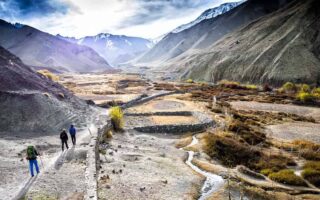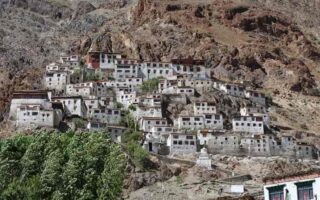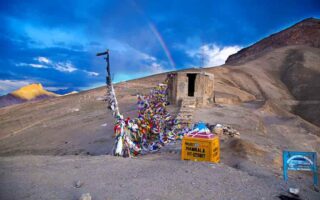A Leh Ladakh trip is a dream for adventure seekers, and only fortunate few get to visit this place in their lifetime. A perfect journey is near to impossible for travelers, since all have to bypass a lot of shortcomings and obstacles- the rough terrains, fluctuating weather conditions and harsh, sparse and barren landscape. Only the brave and bold can withstand the rigors of this tough yet enchanting trip.
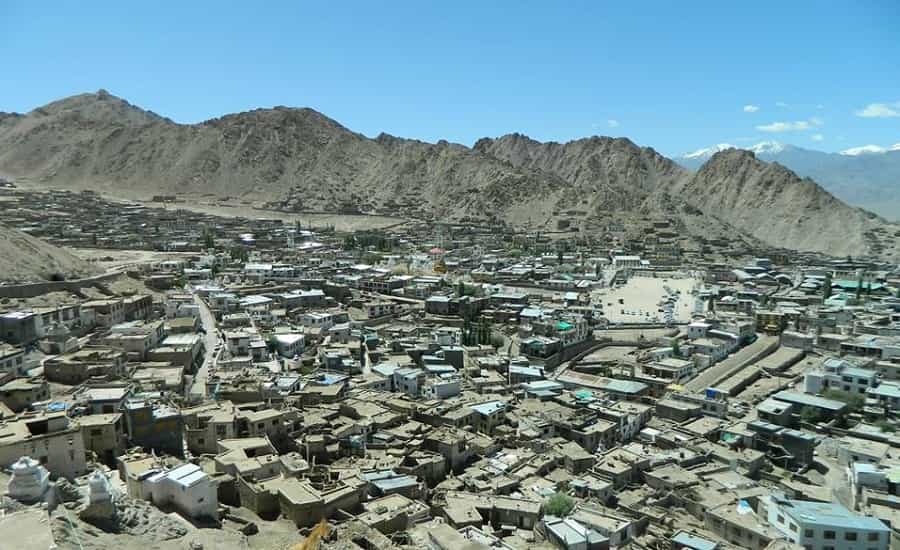
An itinerary of 10 days is required to see places like Manali, Jispa, Sarchu, Leh, Pangong Lake and Khardung La pass. Other surprises include Leh bazaar shopping, visit Shey and Thiksey monasteries, Shanti Stupa and to top it all, an exotic mountain dinner.
- True to the proverb, ‘No risk, no reward’ – once a traveler reaches Leh – Ladakh after an arduous journey, surprises galore in the form of:
- Beautiful views and vistas
- Access to some ‘dangerous’ and unique places, based on weather predictions and conditions.
- Chance to relish local delicacies and cuisine
- Pristine, snow-clad mountain peaks and clear, unpolluted environment which are perfect fits for clicking away photographs to heart’s content!
How to Begin?
As with every other activity, the biggest hurdle to plan a trip is “Where to start?”. While it certainly is a difficult task, one can certainly begin with the following:
- When to Go? – May to September are best months to visit most places in Leh – Ladakh region. It may be overcrowded in until July and hence, a visit in the later part of summer can be preferred.
- How Long? – It is recommended that a minimum of 2 weeks should be set aside for a trip to this region (including travel time) – This would roughly leave about 10 days for stay and visit to all prominent places around.
- Mode of Travel? – It all depends upon where one resides. In any case, if one can afford there is nothing like traveling by Air. Visitors can easily reach either Kushok Bakula Rimpochee Airport, Leh or Sheikh-ul-Alam Airport, Srinagar both of which are well connected to many Indian cities. However, Leh airport can be preferred for reasons of proximity. From Leh / Srinagar, visitors can take either government buses or take private taxis / MUVs on hire. From Srinagar, Leh is at a distance of 430 Kms with an estimated travel time of 15 hours.
- Adventurists may opt for a bike trip, which needs a lot of preparation and meticulous planning.
- Need for Guide? – Generally, all the hotels provide valuable information regarding places to visit, timings and all other necessary details. There are many licensed travel guides available whose services can be availed if needed. Trekkers must be careful to look for guides who are registered with ‘Indian Mountaineering Federation’.
- Where to Stay? – This is not a big worry for travelers. Multiple options – ie: hotels, government rest houses, homestays and camping facilities are available in plenty. However, one must reserve accommodation well in advance especially in peak season. Some of the prominent hotels in this region are:
Basics:
Visitors must realize that due high altitude mountains, a normal person is most likely to experience respiratory issues, however healthy one may be! Hence, weather acclimatization is an essential part of the trip before visiting any places. Important points to consider and prepare are:
Clothing, Toiletries, and Accessories:
- Pullovers, Sweater, Thermal ware.
- Hand gloves, earbuds, caps to cover the neck, ears.
- Woolen socks
- Bath gel, Hand towel, ointment for wounds, bandages
- Waterproof shoes which are non-slippery
- Warm sleeping bag
- Raincoat
- Essential daily medicines and those meant for acute mountain sickness.
- Energy boosters – Chocolates, biscuits, dry fruits
- Blanket
- Pair of slipper for use within rooms
- Torch
- Mobile charger/power banks
- Camera kit/batteries
- ATM / Credit Card(s) (Travelers should note that in Leh-Ladakh cash is the preferred mode of payment! Hence, it is better to draw and maintain adequate cash to meet expenses)
Dos and Don’ts:
- Be aware of your physical condition – Never overestimate your ability to withstand adverse conditions. The vagaries of nature in Leh-Ladakh can stump anyone.
- While planning a trip, allow the first 48 hours for your body to acclimatize to the weather conditions. Do not venture out during this period.
- Start going around to places, which are at greater heights in an ascending order – ie: visit the ones at lower levels first gradually going to places upwards!
- Keep body hydrated but not excessively as it could be harmful.
- Do not exert physically beyond capability. Low oxygen levels can quickly lead to fatigue and result in breathlessness.
- If one experiences, headache, nausea, dizziness, or fatigue, rest immediately and descend without delay – Army posts in this region are equipped to provide the necessary medical assistance in such cases. Do not hesitate to ask for help.
- Avoid smoking and drinking alcohol.
- If taking Leh-Manali Highway, then stop at Keylong, Jispa, and Darcha and avoid staying at Sarchu if possible. Otherwise, if traveling thru Leh-Srinagar Highway spend the night at Kargil.
- Even if reaching Leh directly, one should still need 2 days lead time before venturing out. During this period can go on a short trip to Thiksey, Hemis, Shey, Nimoo and Stok etc. to visit monasteries and palaces.
- Avoid sleeping during the day.
- Always obtain permission before taking photographs, as this is a high security / sensitive Area.
- Foreign nationals require ‘Protected Area Permit’ and all Indian nationals need ‘Inner Line Permit’ to enter the valley.
- Private vehicles are not permitted in most places. Visitors should hire taxis from the local taxi association, which provide very efficient and courteous services.
- Communication services of BSNL are the best and most reliable. Prepaid mobile connections will not work and in general, mobile signals are very weak and unreliable. However, there are ‘PCO’s available for communicating with near and dear. ‘Wifi’ connections will not work.
- Fuel stations are far and few. Hence, it is recommended to fill adequate fuel in the vehicles.
- Respect local culture.
- Do not use plastic bags. In general, be responsible to preserve the environmental beauty of this region.
Places of Interest:
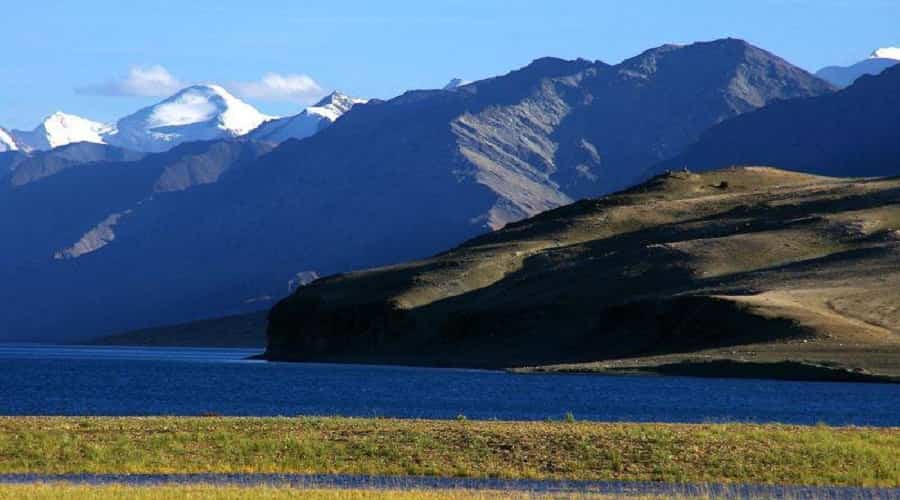
Tso Moriri Lake- This Lake also called ‘Mountain Lake’ is surrounded by the Himalayas and is a fresh- brackish water lake. This is the largest high altitude lake in India at an altitude of 4,600 m. The lake spreads to a distance of 28 Kms from north to south with a median depth of 100 feet and is also a notified wetland reserve. The lake is home to many endangered species.
Pangong Lake- It is close to Chushul Mountains and lies at an altitude of 4,350 m. The lake changes color every season from green to purple to violet and blue. The lake is a breeding ground for these birds.
Tso Kar Lake- Called as ‘White Lake’. A place of utmost tranquility and the smallest lake in the region. The harsh lands surrounding the lake is home to varied bird species – Ducks, Geese, and Grebes are found in plenty. The breeding ground for black-necked
Nubra Valley- Nestled in Karakoram Range, Nubra is rich in fruit and vegetable production. Rare medical plants of sea buckthorns and alfalfa are found here during summer a carpet of yellow and pink roses and in autumn wild lavenders can be seen. Sand dunes, Bactrian camels, Panamik Hot Sulphur Springs are the hottest attractions in this region.
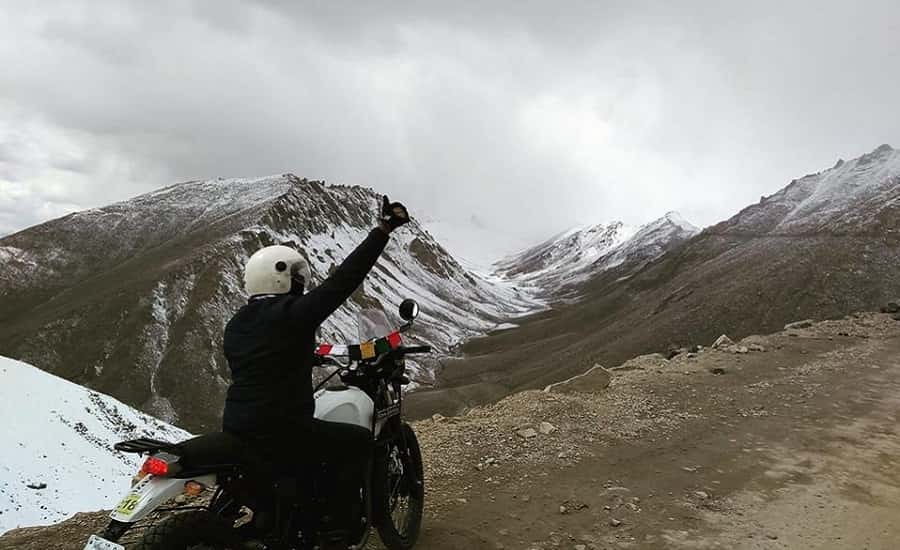
Khardung La Pass- At a height of around 18,380 feet, this is one of the worlds’ highest motorable road and is a gateway to Siachen and Nubra valley. This was constructed in 1976 and was opened in 1988, but to go through the pass one needs to have special permits. Lamayuru– Lamayuru is one of the oldest historical monasteries hardly with a population of 150 monks. The monastery also has a unique feature of an 11 headed, 1,000- eyed image of a chenrezig (Bodhisattva of compassion). Masked dances are performed on the 2nd and 5th month of the lunar calendar.
Magnetic Hill- At 14,000 ft. this has the unique anti-gravitational force and is one of kind ‘magnetic hill’ in India. It is puzzling to see vehicles parked in neutral gear within an earmarked area move up the hill on its own!! This is surely a place where everyone is thrilled by science.
Chumathang- A high altitude pasture land inhabited by shepherds of Langtang Valley. Barley and wildflowers grow in this region. There are many natural hot water springs in this village on the banks of Indus River. Villagers boil potatoes, eggs, and rice in the hot springs.
Chang La- At an altitude of 17,600 ft. this is the world’s 3rd highest motor-able road. Additionally, it has the distinction of having the world’s highest operational research center of Defense Research and Development Organization [DRDO].
Changthang Wildlife Sanctuary- A unique wildlife sanctuary and home to the black-necked crane, Tibetan wild ass. Indus River flows through the sanctuary. I can visit only from June to October.
Hall of Fame Museum- Built in memory of soldiers who sacrificed their lives during India – Pakistan war this is maintained by Indian Army. The museum displays the arms, ammunition seized from Pakistan army and pictures/biographies of brave soldiers. On display are also equipment, apparel used by Indian army in Siachen glacier which is one of the most treacherous military bases in the world.
Suru valley- The trek to Suru valley to the Glaciers of Drang-Drung is a thrilling experience for trekkers. It is one of the toughest treks and only recommended for experienced trekkers.
Zanskar River- The River is one of the most popular things to do in Leh Ladakh. The Chadar Trek is undertaken in November when the river is frozen. In summer, the sparkling white waters of is best for rafting. Zanskar Rafting expedition ranks among one of the best river trips in the world.
Donkey Sanctuary- The donkey sanctuary is a unique feature of this area that cares for old and sick donkeys. This place acknowledges the use and contribution of donkeys in the region (for carrying loads). This place in Leh is very lively and friendly with lots of humorous posters and scribbled wall drawings.
Gol Market / City shopping- A small tourist market is a friendly place and a ‘go to’ place for regular items, bags, and camping supplies. The souvenirs and artifacts put up on the roadside are easy to bargain. The Pashmina wool dresses are also good to look out for. For Tibetan jewelry, motifs, carpets, and woolen clothes the city shopping area offer good choices.
- Also Read: Popular Places to Visit in Leh Ladakh
Monasteries & Other Religious Places
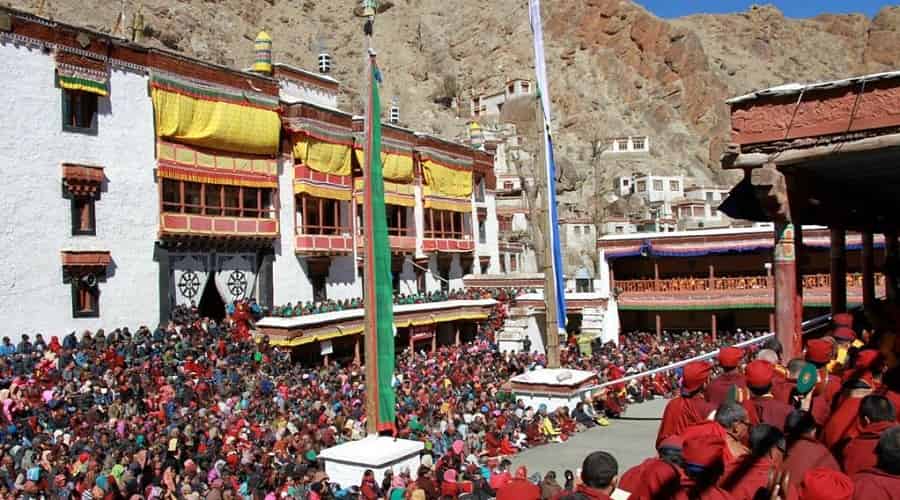
Spituk Gompa – This has 100 monks and a giant statue of Goddess Kali. It is a beautifully carved region atop a hill. Has a collection of antique arms, icon, masks, Thanka paintings. The view of the monastery is truly amazing, the winds at the night may really freeze your bones.
Namgyal Tsemo Gompa Monastery – Built to signify the visit of Dalai Lama. This place has more influx of Buddhists. Volunteers can stay and assist the daily chores of Gompa as well as enjoy some spiritual and peaceful days here.
Likir Monastery– Has an exotic woodwork. It also houses a museum, which tells the history of Ladakh. Visitors can also enjoy the scenic beauty of the site.
Shanti Stupa– Located on the hilltop of Champa in Leh. A place to find serenity, inner peace, meditate. This place has a good nighttime view and a meditation around the stupa helps to calm down the mind. This is a white-dome structure dedicated to Buddhism. The structure exemplifies Indo-Japanese relations. This structure commemorates 2500 years of Buddhism and has a huge idol of Buddha.
Leh Palace– The stone and wood ruins are a must for anyone who is interested in historical architecture. The place was built by King Sengge Namgyal in the 17th century and is 9 stories. The top floors accommodate the royal family and the lower ones are used as storerooms and horse stables. It gives a panoramic view of the Stok Kangri and Zanskar ranges across the Indus Valley. The palace has a huge collection of relics, paintings, utensils, and cutlery.
Vajra Bhairav Shrine – Located in Spituk and is a part of Indus river valley. Dedicated to Lord Vajra Bhairav considered being a master guardian of protection as per Tibetan Buddhism. Deity is open to devotees only once in a year and on all other days hidden in the sanctum sanctorum due to supernatural. The walls of the temple are adorned with 600+-year-old paintings.
Serzang Temple – Constructed in the 17th century using copper and gold. Has a 30 ft high copper gilt statue of Buddha. Unique paintings are being preserved.
Gurudwara Patthar Sahib- Constructed in memory of Guru Nanak’s visit to Ladakh region. Located at Leh-Kargil road at 12,000 ft above sea level.
Jama Masjid- Largest mosque in Ladakh. Built by Mughals in the 17th Symbol of Islamic culture and heritage. Has ‘Shahi Hamdan Memorial’ dedicated to Mir Syed Ali Hamdani, a Sufi Saint. Only men are allowed to enter this holy place.
Cost:
Cost typically varies depending on the mode and the place from where one travels. In addition, the duration of the trip, type of accommodation and the activities are undertaken also affects the cost. However, on an average for Indian travelers, the expenditure will be in the range of Rs.50,000 to Rs.80,000 per person for the 12 day trip. On the same basis, the cost for foreign travelers will range between $1,500 – $2,000 (excluding travel cost).
Conclusion:
Overall, no words can explain the thrill that a Leh Ladakh trip can provide! The beauty of the place make travelers enthused, spellbound, and one will just be in harmony with nature. The place is sure to hypnotize the senses. Truly, this is a WoW!! A place which is a heavenly abode!. All in all, if one takes care to plan and equip to handle adverse climatic conditions a heavenly experience is guaranteed!.
